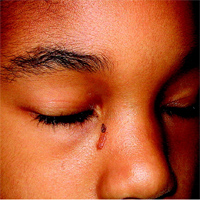URINARY TRACT INFECTION
 Urinary tract infections are typically generated by bacteria, particularly E.coli, which come from the bowels and may settle on the skin of the buttocks.
Urinary tract infections are typically generated by bacteria, particularly E.coli, which come from the bowels and may settle on the skin of the buttocks.
Each component of the urinary tract may fall victim to such an infection: the kidneys and the ureters (these are the tubes which export urine from the kidneys to the bladder) as well as the bladder and the urethra (the tube that exits the bladder).
Urinary tract infections are classified as either upper or lower. An upper UTI, medically known as pyelonephritis, is such that affects the kidneys. A lower UTI, also called cystitis, targets the bladder. In about 40 per cent of all cases some form of structural abnormality is present, which increases the possibility of such an infection.
One of the often occurring abnormalities of this kind is called vesicoureteric reflux (VUR). It concerns the way the ureters connect to the bladder. In VUR subjects urine can easily flow back up towards the kidney, which is a factor that contributes to the infection.
The following should all be taken into account as they are pertinent to the contraction of urinary tract infections: not going to the toilet often enough, not emptying the bladder entirely, hurrying when passing urine (these are to be avoided as microorganisms in the bladder cannot be taken out with urine before they multiply), constipation, inflammation of the vulva in girls or damage to the bladder nerves.
Symptoms of Urinary Tract Infections
Older children usually experience fever, shivers or pain when passing urine as well as pain in the abdomen or the loins. They also report a constant feeling of urgent need to go to the toilet. There may be blood in the urine, vomiting and diarrhoea. Younger children and babies are very likely to exhibit no specific symptoms. They can simply be feverish, irritable or drowsy with a little bit of vomiting or diarrhoea. Little children may also lose their
appetite for food.
Factors Contributing to Urinary Tract Infections
The exact percentage of children with UTIs is hard to define. Modern research points out that 1 in 10 girls and 1 in 30 boys will contract a UTI by the time they reach the age of 16. Girls are a lot more susceptible since, anatomically, their urethra is shorter and bacteria can pass into the urinary tract without difficulty.The presence of UTIs is confirmed by a lab examination of a sample of urine. Your doctor will explain how to take a urine sample from your child.
Treatment of Urinary Tract Infection
Treatment involves antibiotics and plenty of fluids to pass through the urinary system. If the infection persists or when it affects small babies, specialized hospital treatment may be necessary. Prevention of UTIs includes sufficient and regular intake of water and proper treatment of constipation.
It is important that girls are taught to wipe from front to back after going to the toilet (this way microorganisms that cluster around the anus will not move forward). Most children who contract a simple UTI have no complications.
Children who periodically suffer from UTIs or sustain rare urinary tract infections have to undergo additional examinations to detect possible abnormalities (for instance, VUR). VUR may contribute to the formation of scars on the kidneys which, on its turn, might entail other health problems later on (for example, high blood pressure).
[AD]
More from the same category








